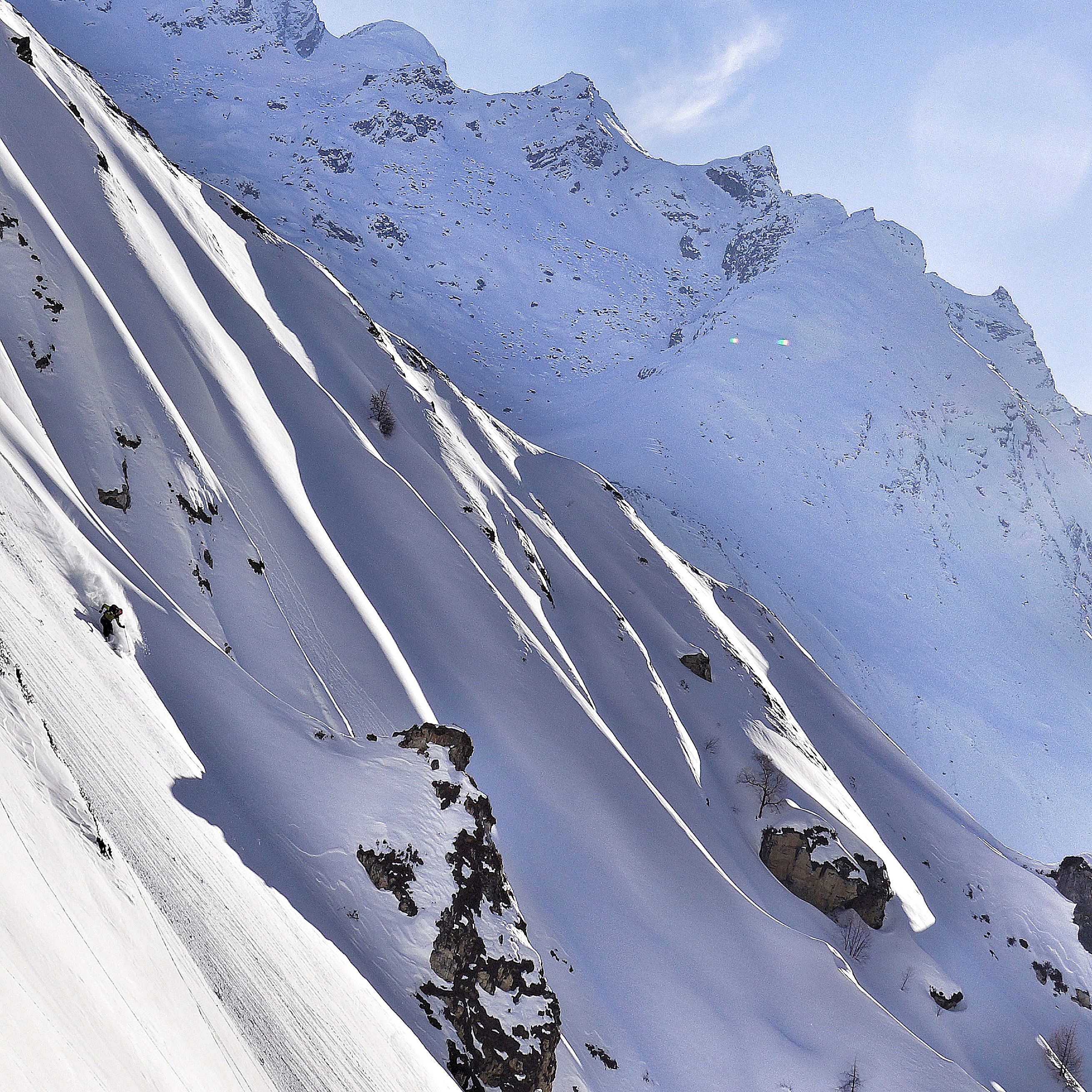Skiing in the Himalayas…
༄ What is Freeskiing? Freeskiing to me is simply skiing without rules. Historically skiers have competed in competitions, races, and events to create a playing field where there are winners, losers and style. To me freeskiing is beyond this. A skier, the mountains and the freedom to pursue in any way one would like. This is freeskiing.

Luke Smithwick skiing in a remote village of Nepal.
Now bring in the Himalayas. The Himalayas are a mountain range that are fragmented across the countries of Pakistan, Nepal, India, China, and Bhutan. Fragmented means they are not a continuous chain of peaks, they are in sections. Each section has a different snow climate, meaning different amounts of snow, unique terrain types, and different elevations and culture.
Bring the two words together. Himalaya freeskiing. Himalaya freeskiing is limitless. For most of the year I’m focused on freeskiing at the lower Himalaya elevations from 10,000 to 15,000 feet (3000m – 5000m). This is where the best snow quality is and the most enjoyable skiing (you can actually breathe and enjoy the experience). The areas that are best for this skiing in the Himalayas are the Annapurna range, the Humla range, the Kashmir Himalayas, and Langtang National Park. As with all mountainous areas of Earth, some years are better for skiing than others. The best months are January through the end of March. February is best for Kashmir. March is best for Nepal. If you’re willing to climb higher and focus on North faces, there is good skiing into April in the Himalayas.

Skiing the Himalayas involves approaches to get up to the snow. Professional porters, horses, and aircraft can assist in helping you get up to snowline, or you can haul your own equipment. Keep in mind these are the highest mountains on Earth. If you want to have the energy to climb and ski in them, consider support. The Himalayas are different than the rest of the ski world.
The difference. Most skiers, if they think about the Himalayas at all, think about ski mountaineering. Ski mountaineering involves climbing mountains and then skiing from a summit or the top of a route. Stereotypically, snow quality for ski mountaineering isn’t the best and the skiing is usually challenging and not that enjoyable. At the end of the day, ski mountaineering is about achieving an overall objective as opposed to enjoying snow quality and making turns.

Luke Smithwick talking with locals about skiing in the Nepal Himalayas.
Ski mountaineering for me comes into play in the Himalayas when I get above 5000 meters. I pursue ski mountaineering in the Himalayas starting in April and continue with it through the summer months and on into the post monsoon season up to December when winter storms start to bring quality cold snow conditions again. The best ski mountaineering areas in the Himalayas are across the entire range. Once you get above 5000 meters in the Himalayas there are glaciers and year round névé that allow ski mountaineering pursuits in the Pakistan Karakoram, the India Karakoram, the Kashmir Himalayas, the Trans Himalayas, the Ladakh Himalayas, the Changtang Himalayas, the Garhwal Himalayas and so on and so forth. Limitless really.

A ski mountaineering objective in the Himalayas above 6000 meters. The best month for ski mountaineering above 6000 meters in the Himalayas is 15 September – 15 October annually.
Currently I’m in the Annapurna range of Nepal skiing “first descents” in cold powder snow conditions. It’s mid March 2019, and this is really as good as it gets for skiing in the Himalayas. This is the deepest winter for the Himalayas in 25 years, and some argue 40 years. A “first descent” indicates that its likely no one has ever skied where I’m skiing currently. Does that matter? No. But it’s neat to think about. In the grand course of history these events hold little to no significance.
Finally, the Himalayas hold the strongest draw for skiing because of the people that call them home. It’s great to learn and make friends with the thriving communities in these remote villages making their pastoral ways of life. Yak herding, bee keeping, farming and watching the giant mountains above their homes.
Luke Smithwick free skiing the forests of the Kashmir Himalayas. February 2019.











